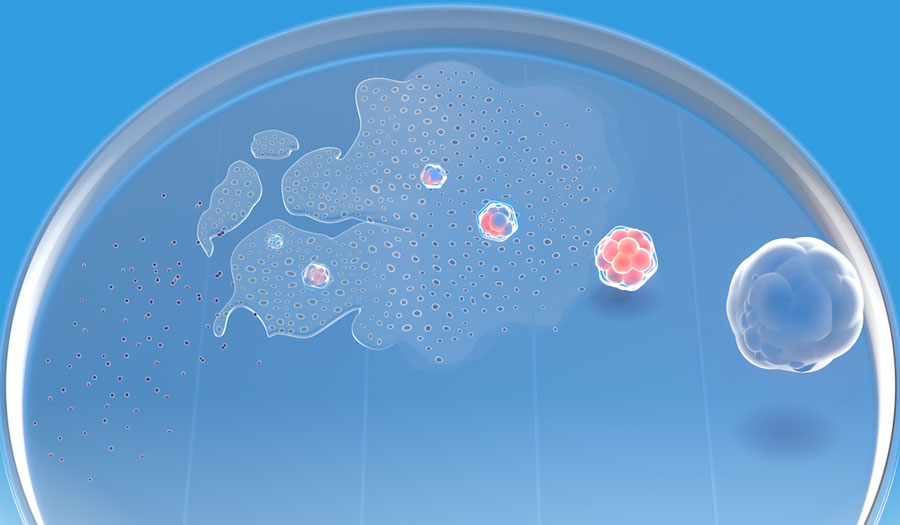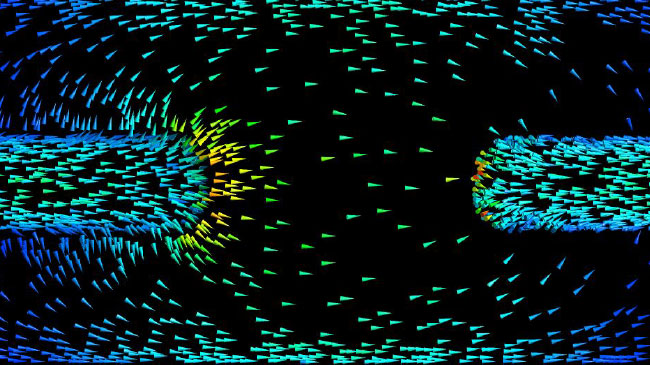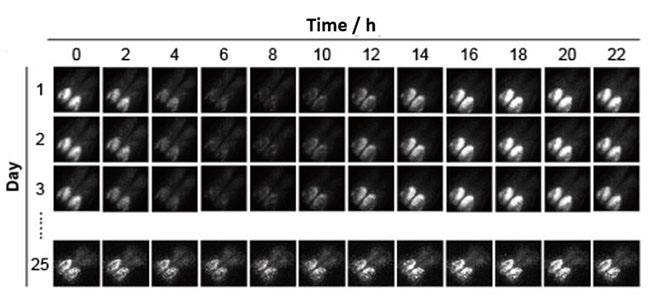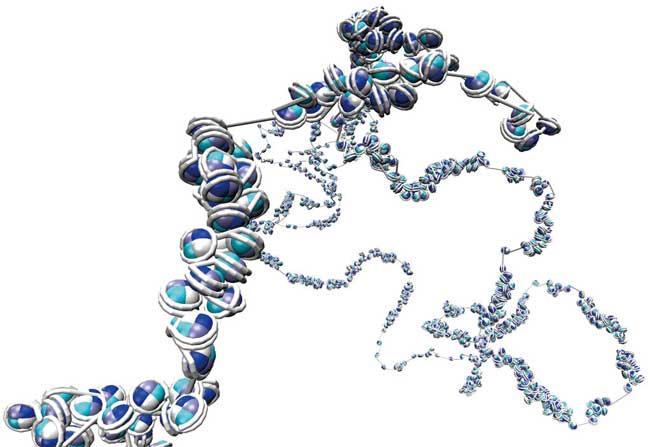Research Highlights
July – October 2019
Analyzing the metabolites produced by single motile cells
Oct. 11, 2019
Yo Tanaka and Nobutoshi Ota of the Lab for Integrated Biodevice and their collaborators fabricated a microfluidic device that can trap up to about 30 individual motile cells at one time so that their metabolism can be monitored using an analytic technique known as Raman microscopy. They demonstrated the device’s potential by using it to track the production of a metabolite called paramylon in highly motile single algal cells. More
Ota N, Yonamine Y, Asai T, et al. Anal Chem 91, 9631-9639 (2019)
Brain tissue kept alive for weeks on an artificial membrane
Oct. 10, 2019
Nobutoshi Ota and Yo Tanaka (Lab for Integrated Biodevice) have developed a new system for keeping tissue viable for long-term study once transferred from an animal to a culture medium. The new system uses a microfluidic device that can keep tissue from both drying out and from drowning in fluid. A proof-of-concept experiment showed that tissue explanted from the mouse brain remained viable after almost one month in culture, much longer than is possible with other microfluidic culturing methods, and also much simpler. More
Ota N, Kanda GN, Moriguchi H, et al. Anal Sci 35, 1141-1147 (2019)
How chromosomes change their shape during cell differentiation
Oct. 09, 2019
Mammalian chromosomes are comprised of megabase-sized globular units called topologically associating domains (TADs), and multiple TADs assemble to form what are called A and B subnuclear compartments. TADs containing many active genes form A compartments, while TADs with few or no active genes form B compartments.
A team led by Ichiro Hiratani of the Lab for Developmental Epigenetics showed that A/B compartment changes represent physical movements of TADs within the 3D nuclear space. The study also demonstrated that changes in chromosome conformation preceded changes in DNA-based transactions such as gene expression and DNA replication, entertaining the possibility of predicting DNA transactions based on preceding changes in chromosome structures. More
Miura H, Takahashi S, Poonperm R, et al. Nat Genet 51, 1356-1368 (2019)
Doubling down on boron to make complex organic molecules
Aug. 30, 2019
A team led by Takamitsu Hosoya of the Lab for Chemical Biology has developed a user-friendly method to form sought-after diborylalkenes by attaching boron groups to organic molecules. These diborylalkenes are stepping stones to generate many valuable compounds, including pharmaceutical drugs and medical imaging probes for positron emission tomography (PET) scans. More
Uetake Y, Isoda M, Niwa T, Hosoya T. Org Lett 21, 4933-4938 (2019)
Implantable 3D blastocyst-like embryonic structure generated from mouse stem cells
Aug. 09, 2019
(Top image) Cody Kime of the Lab for Retinal Regeneration and his collaborators have generated 3D blastocyst-like structures from pluripotent stem cells. The study shows that the blastocyst-like structures very closely resemble actual blastocysts, and even induce proper changes in the uterus after being implanted in pseudo-pregnant mice. More
Kime C, Kiyonari H, Ohtsuka S, et al. Stem Cell Reports 13, 485-498 (2019)
How phosphorylation of eIF2 reduces protein synthesis
Aug. 09, 2019
When cells are subject to conditions of stress, they will stop production of proteins to concentrate their resources on processes more necessary for survival. A study by Takuhiro Ito and Kazuhiro Kashiwagi of the Lab for Translation Structural Biology reveals how a small modification to eukaryotic translation initiation factor 2 (eIF2), a key molecule for initiating translation of messenger RNA into proteins, can shut down a cell’s protein-producing machinery when the cell is stressed. This finding could help to find new treatments for neurodegenerative diseases and traumatic brain injury. More
Kashiwagi K, Yokoyama T, Nishimoto M, et al. Science 364, 495-499 (2019)
A new model for exploring cell polarity
Jul. 26, 2019
Kalyn Kono and Fumio Matsuzaki of the Lab for Cell Asymmetry, and other collaborators in BDR have found an intrinsic way to induce cell polarity—the asymmetry observed in the shape, structure, or organization of cells—in fruit fly cells. This method provides a useful means for scientists to study the real-time dynamics that occur during cell polarization on a micrometer scale. More
Kono K, Yoshiura S, Fujita I, et al. Elife 8, (2019)
Cyborg-like microchip valve driven by earthworm muscle
Jul. 08, 2019
Yo Tanaka and his team (Lab for Integrated Biodevice) have developed the first microchip valve powered by living cells. The earthworm muscle tissue used in their system allowed for a high contractile force that could be sustained for minutes, and unlike electrically controlled valves, did not require any external power source such as batteries. More
Tanaka Y, Funano SI, Noguchi Y, et al. Sci Rep 9, 8042 (2019)
Analyzing chromatin structure in more detail than ever before
Jul. 05, 2019
A powerful method that can pinpoint the positions and orientations of individual nucleosomes—one of the building blocks of chromatin, which contains the genetic material of a cell—has been demonstrated on yeast by Yuichi Taniguchi of the Lab for Cell Systems Control and his team. Their technique will help researchers to explore the relationship between chromatin structure and function. More
Ohno M, Ando T, Priest DG, et al. Cell 176, 520-534.e25 (2019)





